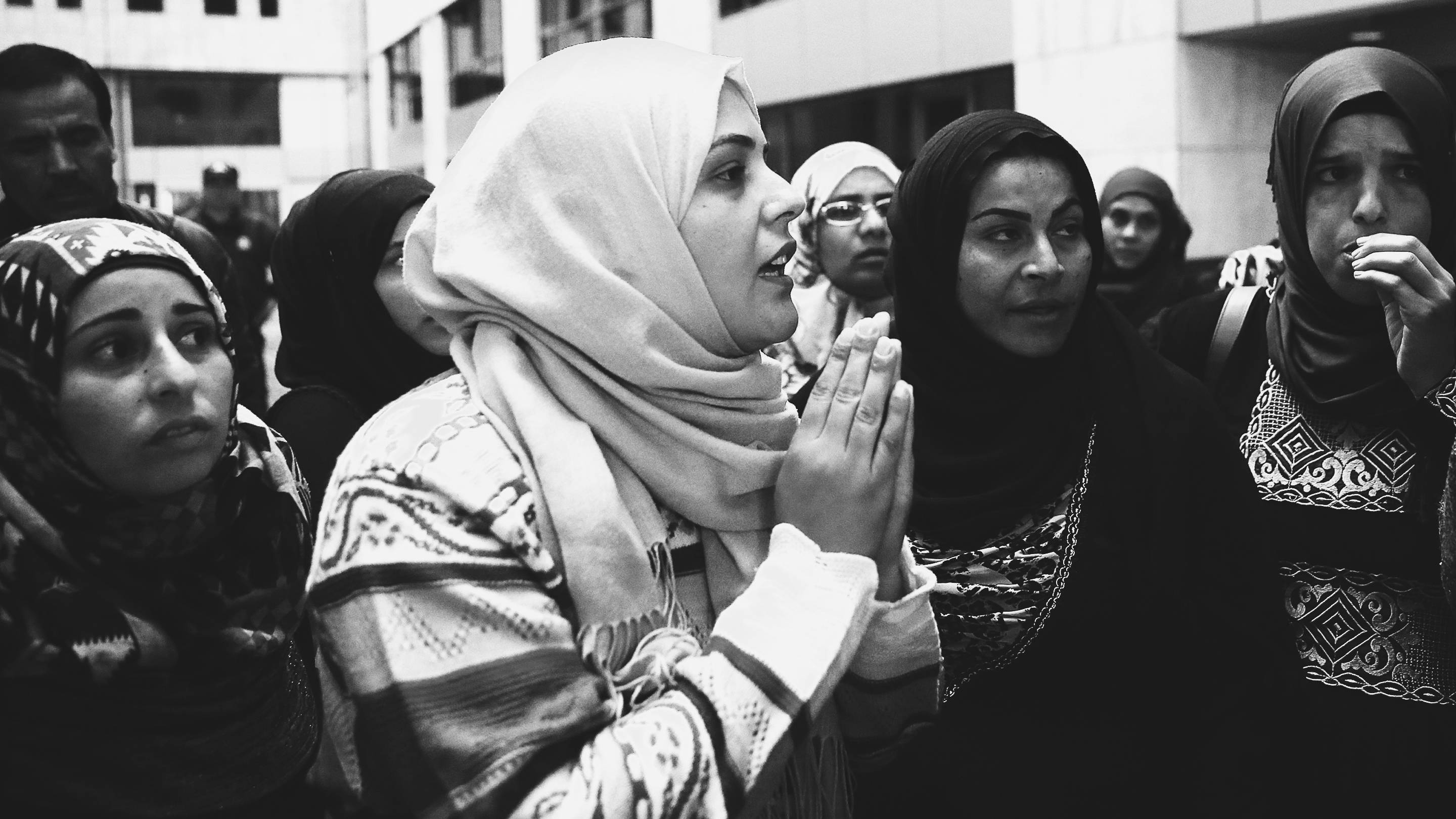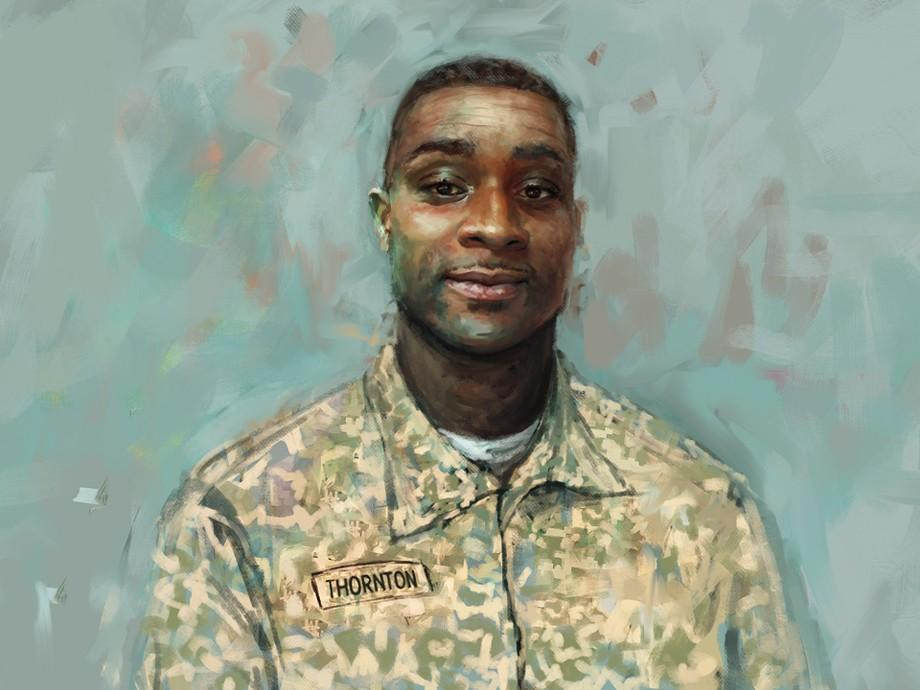
Our Commitment to Refugees Helped Make Us a Superpower
So why are we slashing the resettlement programs that ultimately reduce conflict?
President Donald Trump’s announcement last month that he’d ordered the withdrawal of all U.S. troops from Syria raised concerns that the global refugee crisis could soon worsen as Syrians attempt to flee armed factions taking advantage of the resulting power vacuum.
American forces have begun sending equipment home, with troops set to follow soon. But a worldwide backlash against refugees and asylum seekers is leaving many Syrians with increasingly few places to go. During the 2016 presidential election Trump made fear of refugees—Syrians especially—a central pillar of his campaign platform.
Since taking office, his administration has made deep cuts to refugee resettlement programs a priority. America resettled just 22,491 refugees during fiscal year 2018, roughly half the 45,000 cap—which is itself a major reduction. These are the lowest admission numbers since the Senate unanimously passed the Refugee Act of 1980, with numbers expected to drop even lower in 2019. The administration’s travel ban, now upheld by the Supreme Court, adds another layer of restrictions for refugees and other individuals from several countries—including Syria.
During the 2018 fiscal year America resettled just 62 Syrians. The White House has framed its aggressively anti-refugee stance as vital to American national security—arguing that refugees are dangerous and drain taxpayer money. But some national security professionals and experts have expressed deep frustrations with the administration’s anti-refugee zeal. For them America’s commitment to refugees isn’t feel-good charity—it’s a key component of American power that contributed to its rise as a global superpower.
“It’s often couched as a humanitarian program, but if you actually look at the patterns of when we’ve applied it and when we’ve selectively chosen refugees from overseas, it’s oftentimes been places where the United States has a long-term strategic involvement,” explains Idean Salehyan, a professor at University of North Texas and the co-director of the Social Conflict Analysis Database project. Salehyan authored a policy paper published in September by the Libertarian-leaning Niskanen Center outlining a strategic case for maintaining a robust refugee resettlement program.
During the Cold War, millions of people fled communist countries for the West. Some American officials saw an opportunity. The United States began recruiting many of them—particularly intellectuals and artists fleeing censorship—and propped up a vast network of defectors to broadcast pro-American messages around the globe.
You have people, even generations, languishing in refugee camps without any prospects of bettering themselves through education or employment. And those are the exact sort of people that can be recruited into global militant activity.
“[Refugee resettlement] has often been used to embarrass foreign policy rivals,” says Salehyan. “We’ve accepted refugees from Cuba, Vietnam, the Soviet Union and so on as a way to discredit these regimes on sort of a global stage, as a way to say ‘look, these are oppressive regimes and that’s why people are leaving. And they’re choosing to come to the United States.’”
In other cases, refugees have become valuable sources of intelligence—though the specifics are often highly classified. But it’s known that several Soviet defectors had been scientists working on their nuclear weapons programs and KGB agents. More recently defectors from Iran have shared key intelligence about Tehran’s nuclear program. Some refugees and their children took a more active role in aiding the United States. Many enlisted in the military, became diplomats or even joined American intelligence agencies.
In 1950, Republican Senator Henry Lodge pushed what would become known as the Lodge Act through Congress. The legislation created a military initiative that would recruit refugees from Eastern Bloc countries to form elite infiltration units. In return for military service the refugees would receive expedited American citizenship and be eligible for post-humous citizenship should they die in their duties. Though the U.S. military had a long history of allowing foreigners already living in the United States to enlist, it had rarely looked abroad to recruit.
The recruits were known as “The Lodge Boys.” Many already had combat experience from World War II, some had been anti-Nazi resistance fighters. Controversially, others had experience fighting for the Nazis. Finnish Army veteran Lauri Törni, known to Americans as Green Beret Larry Thorne, was an ardent anti-Communist who had volunteered for duty to fight against the Soviets.
Much like other defectors, a lot of what the Lodge Boys actually did remains classified. But it wasn’t the first time the U.S. recruited refugees to fight. Before the Lodge Boys, there were the Ritchie Boys. In the years leading up to World War II, thousands of people fled Europe to escape rising totalitarian regimes—particularly Jewish families. American public opinion was often against admitting them on grounds that they could be Nazi or Communist spies. But when the United States entered the war, it quickly began recruiting young men who had been born in these countries and spoke the languages to serve in military intelligence. The U.S. Army sent thousands of German, Italian and other foreign-born recruits to Camp Ritchie in Maryland. The Ritchie Boys helped interrogate Axis prisoners and, in some cases, conducted operations behind enemy lines as spies and commandos.
“There’s a huge advantage to being able to build rapport with, integrate with and engage with indigenous forces in a way that will complicate your adversary’s calculus,” explains Army Special Forces officer Doug Livermore. “The Lodge Act was in recognition of that logic that the folks that will most quickly be able to engage with and operate in a denied environment behind enemy lines would be folks that come from those areas, speak the language, know the culture and look like people there.”
The Lodge Act was a short-term initiative, it expired in the late 1950s. But during the 2016 election—as anti-refugee rhetoric was ramping up—Livermore wrote an article in the Special Forces Association’s magazine The Drop advocating for a “New Lodge Act” that would encourage recruiting refugees into special operations units.
[Refugee resettlement] has often been used to embarrass foreign policy rivals. We’ve accepted refugees from Cuba, Vietnam, the Soviet Union and so on as a way to discredit these regimes on sort of a global stage.
A Veteran in Crisis
Preston Thornton called the Veterans Crisis Line for help. When cops showed up, he ended up dead

Livermore says his conclusions were informed in part by his own experiences deploying to African nations and working with African-born U.S. troops. Several of them joined under the Military Accessions Vital to the National Interest (MAVNI) program, which recruits foreigners residing in the U.S. who possess specialized skills—usually medical or linguistic—to fill gaps in the force. The Trump Administration has aggressively targeted the MAVNI program since 2016, in some cases trying to discharge and deport troops who joined under the program.
“The problem is that in some of these places like Africa or the Middle East or even Southeast Asia, you have so many different languages and so many different dialects. So there’s a huge advantage to doing targeted recruiting,” Livermore explains. “We’re talking about areas that may not be terribly easy for a six-foot Anglo-Saxon guy like me to operate in the way we might have to operate.”
The Trump administration maintains a hawkish stance toward Iran. In his first year in office, Trump pulled out of the controversial 2015 Iran nuclear agreement that Obama administration officials spent years negotiating and has pushed hard for sanctions. Just two days after Trump ordered troops out Syria, an American aircraft carrier entered the Strait of Hormuz between Oman and Iran in a show of force, ending the longest absence of a carrier from the Persian Gulf since 9/11. Iranian vessels tailed the carrier and flew a drone nearby. “Our adversaries are watching closely,” a spokeswoman for the Navy’s 5th Fleet told the Associated Press. “We want to be operationally unpredictable to our enemies.”
Administration officials have vocally condemned Iran’s support for militant groups across the Middle East and the Iranian Revolutionary Guard’s deep involvement in regional conflicts—especially in Syria and Yemen. The White House has also criticized the Iranian government’s human rights record. “The great Iranian people have been repressed for many years,” Donald Trump tweeted when Iranian activists took to the streets last winter. Secretary of State Mike Pompeo promised in a speech in May that the Trump administration would “advocate tirelessly for the Iranian people” and has encouraged members of the Iranian diaspora to support Iranian pro-democracy activists and protesters.
However, Iran is one of the countries on the administration’s travel ban list and Iranian refugee admissions have been heavily slashed. With the exception of those that arrived before the ban, Iranian nationals can no longer come to America to study, visit family or for any other reason except under extraordinary circumstances. Even those who arrived before the ban fear going abroad for risk of not being allowed to re-enter. It’s been disheartening to many Iranian refugees, students and exiled intellectuals who for years saw America as a refuge as they’ve worked toward change in their homeland.
“It’s the exact opposite to the approach we took during the Cold War with defectors from East Germany or Poland or the Soviet Union,” says Salehyan, who is himself of Iranian descent. “We said ‘if you get out of those countries, if you defect, then you’re welcome in the West, you’re welcome in the United States,’ and it was shown to the world that they were fleeing the evils of communism in favor of democracy. Now we’re saying that these regimes are evil, terrible, violate human rights, and then when people leave and are trying to escape those countries we tell them they’re not welcome here either.”
Livermore said he would love to see the U.S. government support dissidents wanting to “foster the emergence of a more democratic government” in their home countries, but added that “if we say we’re not going to let any of these people into our country, that makes it really difficult to recruit them. And it makes it less likely that people of these particular ethnic groups or nationalities will be terribly sympathetic to the cause of the United States or embrace those values we say make up who we are.”
ISIS propaganda videos often mocked refugees fleeing the war in Syria, as well as Muslims living in America and Europe. The militants called them fools and told them that westerners hated them and would never truly accept them.
We’re saying that these regimes are evil, terrible, violate human rights, and then when people leave and are trying to escape those countries we tell them they’re not welcome here either.
Refugee waves during the ‘80s and ‘90s created several sizeable Middle Eastern immigrant communities in the United States. “There were a number of people from Syria, Iran, Iraq coming to the United States, forming a new life here, and then that message gets conveyed back home that the United States actually is a welcoming place,” says Saleyhan. “But now the message is getting pretty clearly sent out with the travel ban and the slash in the refugee program and so forth that the United States is actually a hostile place.”
While some activists and pundits have praised the Syria troop withdrawal as a move toward peace, military operations in the region remain very active. During Trump’s highly publicized Christmas visit to U.S. troops at Al Asad airbase in Iraq he told reporters he had no plans to remove the 5,000 troops operating in that country and added "in fact, we could use this as the base if we wanted to do something in Syria.” American troops and advisers continue to work with Iraqi forces hunting ISIS militants. But even as those operations continue it has become harder for Iraqis who have worked with the U.S. government as interpreters to gain admission to the United States. For years, Iraqis and Afghans who worked with U.S. troops and diplomats were eligible for a Special Immigrant Visa, a program that U.S. military veterans and former diplomats lobbied for hard.
Salehyan warns that failing to follow through on those promises will make it harder for American officials to find local allies in dangerous places around the world. “When even those programs are being shut down, it sends a chill,” he explains. “They’re going to say ‘why should we cooperate with the United States if they’re not going to bail us out if we really have a need for it?’ I think where we have military operations people that help us should know we have their back if they or their family are targeted.”
Trump’s suggestion that American troops could continue operations in Syria from Iraq suggests they will soon face that reality. There are currently no indicators that the administration considered any plans to address the fates of Syrians who have already worked with U.S. forces inside their country. The SIV program applies only to Afghan and Iraqi nationals, and with Syrians subject to the travel ban it’s unlikely they can count on their American comrades to find refuge.
Trump has praised Turkish President Recep Tayyip Erdogan, who has vowed to “cleanse” Syria of Kurdish fighters who fought alongside American troops and make up the bulk of the U.S.-backed Syrian Democratic Forces that control former ISIS-held territory. Turkey also has backed several hardcore Islamist militant groups as proxy fighters in Northeast Syria. Members of the SDF and some residents of Northeast Syria expressed dismay at Trump’s withdrawal announcement—many outright called it a betrayal. Kurdish forces are already ceding territory to Russian and Iranian-backed pro-regime forces and other militant groups to free up manpower to defend themselves against Turkish forces, exposing anti-regime dissidents that had lived under SDF protection to violent reprisals. Iranian-backed militias have killed thousands of civilians and repopulated captured towns and homes formerly occupied by Sunni residents with Shia settlers—sometimes from Iraq and Lebanon—in order to build new support for the regime and prevent Syrian Sunni refugees from returning.

Zero Dark Dirty: Attraction and Assault in the Armed Forces
With the most dangerous combat positions opening to women, an age-old question resurfaces
The refugee admission process is distinct from the one for asylum seekers, who apply for asylum while inside the United States or at the border. That process has been part of ongoing debates around border security as Latin American asylum seekers fleeing gang violence and poverty attempt to cross the border. Those debates in part led to the current government shutdown as Trump demands funding for a border wall.
The massive scale of human displacement around the globe has caused instability in developing countries that lack the infrastructure to house refugees and asylum seekers. Sprawling refugee camps can become prime locations for extremist and criminal groups to recruit desperate people, particularly when they border conflict zones—sometimes allowing conflicts to spread. Refugee resettlement opponents have pointed to these camps as evidence that refugees pose a dire threat and an economic burden. However, Salehyan explains that when refugees and asylum seekers reach more developed countries farther from the conflicts they’re fleeing, it’s generally very rare to see violence or instability except in isolated cases. He argues that pro-active resettlement greatly reduces conflict in the long term. “It’s something that wealthy, developed states have been able to deal with pretty well.”
The historic numbers of people fleeing violence have led to a global backlash. Even former Democratic presidential nominee Hillary Clinton—who criticized Trump’s anti-refugee rhetoric as racist—recently advised Europeans to crack down on refugees and asylum seekers, telling The Guardian that she believes they have become a political liability. “I think it is fair to say Europe has done its part, and must send a very clear message – ‘we are not going to be able to continue to provide refuge and support’ – because if we don’t deal with the migration issue it will continue to roil the body politic,” Clinton argued.
During NATO’s military involvement in the Balkans during the 1990s, the U.S. and Europe worked closely on protecting and resettling refugees of the conflict. “Countries around Kosovo, the Balkan countries, our European allies, were facing enormous burdens trying to provide for the needs of Kosovo refugees,” explains Salehyan. “The United States agreed to take in a small share, but still a symbolic share, to show that we stand by our allies and that we’re willing to help them as they help us with military operations.” European countries that sent troops to Syria as part of the U.S.-led coalition were just as surprised as the SDF when Trump announced the American withdrawal. It’s unclear how they will respond if a U.S. drawdown leads to more violence and refugees.
The war against ISIS has been destructive. The battles to clear ISIS from the cities of Mosul in Iraq and Raqqa in Syria left thousands of civilians dead and entire neighborhoods in ruins. After the battles, the White House heavily slashed reconstruction funds and aid. Trump tweeted that he’d secured a Saudi pledge for reconstruction funds, but Saudi officials have said no such pledge exists. As Syrians look for ways out, the administration has so far remained adamant about keeping out Syrian refugees, and Trump has urged Europeans to elect leaders that will do the same.
Salehyan acknowledges there are limits to refugee resettlement. “I’m not saying that the resettlement program is a panacea, obviously we can’t resettle everyone,” he says. But he worries about the consequences of failing to address the plight of refugees. In particular, that fear-driven, anti-refugee policies could lead to a self-fulfilling prophecy that actually makes the world much more dangerous in the long-term. “You have people, even generations, languishing in refugee camps without any prospects of bettering themselves through education or employment,” he explains. “And those are the exact sort of people that can be recruited into global militant activity.”
Today, millions of Syrians remain in refugee camps across the region. “In cases like Jordan, where employment is severely limited, these people just live in the shadows, and that’s not good for anyone,” Salehyan warns. “That sort of sense of long-term hopelessness and lack of opportunity can lead people to see violence as the only solution.”






